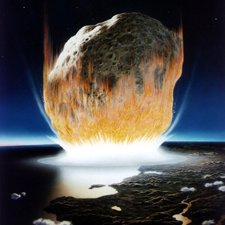NASA denies that an asteroid caused the extinction of the dinosaurs
Observations by NASA's WISE probe have dismantled a study conducted in 2007, which pointed to a Baptistina type asteroid had caused the extinction of the dinosaurs. Thus, is again in the air one of "the mysteries of the Earth", as noted by NASA.
First, scientists argued that a large asteroid had hit Earth about 65 million years and ended with the existence of dinosaurs on the planet, and other forms of life. Studies of this theory was questioned because it could not prove where the celestial body would have fallen and what would have been their journey to reach Earth.
But in 2007, a paper said the cause of the extinction of large reptiles were the remains of an asteroid, the type known as Baptistina, which would have collided with another asteroid in the main belt between Mars and Jupiter. This collision caused the asteroid to pieces and parts, large size, ending hit Earth with life.
Now, WISE probe data have shown that this might not be possible. "The result of the research team denies this theory, so the case for the extinction of the dinosaurs open again," said the head of the Observation Program Near Earth Objects (NEO), Lindley Johnson.
Johnson's team has observed for over a year, the reflectivity and size of 120,000 asteroids, including 1056 Baptistina family members and found that the rupture of the parent asteroid was about 80 million years, less than half the time suggested above. With these data, the researchers could calculate how long it would take to reach its current position Baptistina.
The results show that for this asteroid were to blame for the extinction, it would have impacted the ground in less time than was previously thought to cause the disappearance of the dinosaurs, which would not have had time to this event took place.
Scientists are working on a "family tree" of sorts is in the asteroid belt to try to find the piece that matches the traces left by the passage that fell into what is now Mexico's Yucatan peninsula, leaving a 10-kilometer crater, which ended the Cretaceous period.
Source: europapress.es

No hay comentarios:
Publicar un comentario